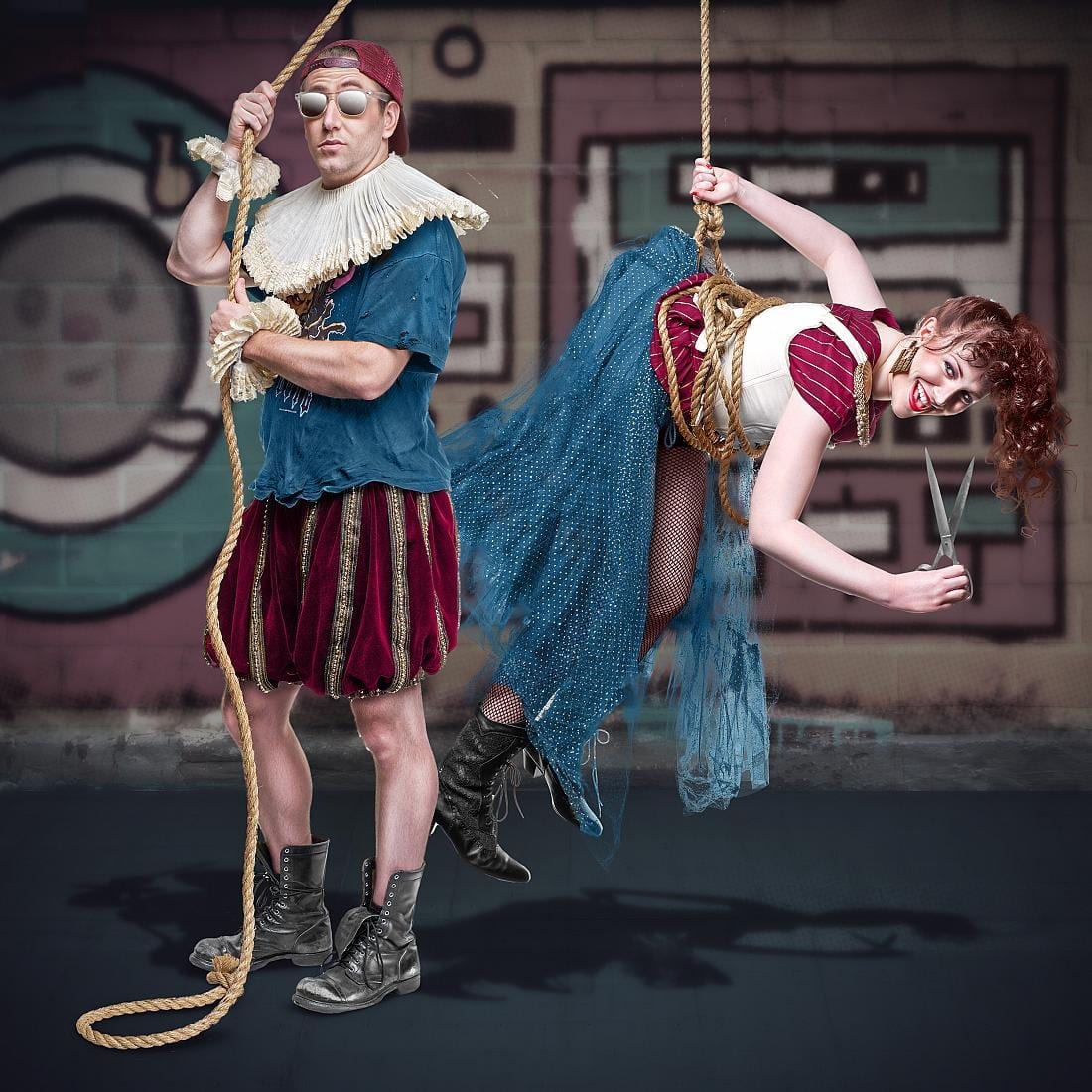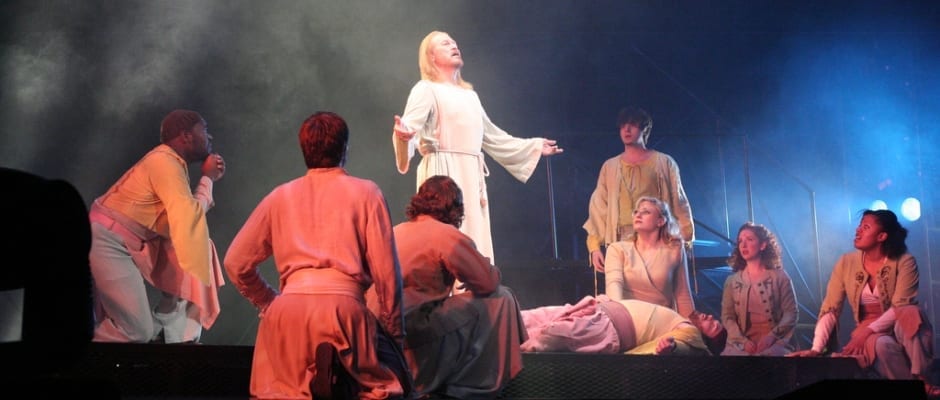PROVO — About halfway through The Seagull, one of the characters attempts suicide, but the bullet grazes his skull, and he survives. D.A.M. Good Productions has mounted this important play, and—like that errant bullet—the show mostly misses the target.
In The Seagull, a country estate is the site of several love triangles involving the families of the elderly Peter Sorin and his employees, the land manager (Ilya Shamrayev) and his wife (the housekeeper Paulina). Peter’s nephew, Constantine Treplev, is a playwright hoping to make his name through avant-garde works who is in love with his neighbor, the aspiring actress Nina, who acts in his latest play. Meanwhile Nina is in love with Boris Trigorin, the lover of the sister of Peter Sorin, the aging actress Madame Arkadina. The less wealthy characters have their own entangled relationships with Paulina, who is still enmeshed with her former lover, the country doctor Eugene Dorn. Ilya and Paulina’s daughter, Masha, pines for Constantine, but she is pursued by local schoolteacher Simon. It is a very complex web of relationships, and the diagram in the program was helpful in understanding the characters and how they relate to one another.
The Seagull is, rightly, seen as one of the masterpieces of early realism, and the profoundly detailed portraits of the characters is a hallmark of Anton Chekhov‘s work. The roles are challenging because of the genuine emotion and the important subtext that nearly every actor needs to convey in a successful production.
Unfortunately, this very amateur cast was in over their heads when portraying these characters. All of the performers seemed to give their best effort, but few had the training needed to portray the deeply real psychology of their characters. Most actors were also incapable of projecting their voices with sufficient volume, and many lines were drowned out by the the traffic on 800 North, the BYU women’s soccer game, the babbling of the nearby outdoor water feature, and—after night fell—the loud crickets and cicadas in the surrounding foliage.
Two minor exceptions to this general trend were Courtney Lawson as Nina and Nick Newbold as Boris Trigorin. Lawson showed Nina’s yearning to aspire to success as an actress and as Boris’s lover. Newbold conveyed the sophistication of a literary celebrity well enough and had the only hint of charisma among the men in the cast. The most real scene of the evening was when Trigorin talked about his compulsion to write and Nina listened with rapt attention. Her sincerity and his self-involvement were apparent in that moment.
Unfortunately, I could enjoy none of the later scenes between Lawson and Newbold because of the difficulty in seeing the action. After dusk, the major source of artificial lighting in the outdoor venue was a streetlight about 40 feet away. Some artsy lighted jars (by lighting designer Denali Linton) on a table at center stage did little to illuminate the actors. For most of the play, I could not see the actors well enough to engage with the characters—and sometimes I didn’t even know who was speaking.
Even when I could see the action, the directing was disappointing. The Seagull is an ensemble piece that requires a director who can help a cast build meaningful relationships and dive into their characters’ inner worlds. If Zoe Trepanier attempted this in her directing, there was little evidence of it on stage. From what I could tell, the greatest directorial concern was to block the actors. Chekhov deserves more.
Although the efforts were noble, there is little to recommend about this production of The Seagull. I spent most of it sitting in the dark, unable to see or hear much of the action, watching actors doing little emoting, and feeling completely unmoved by the characters. There is value in giving amateurs some acting opportunities, but a script more suited to inexperienced actors would have provided more opportunities to grow their talents and provide more enjoyment for the audience. Mercifully, this production is only 80 minutes long, counting the 5-minute intermission, and it was free.






